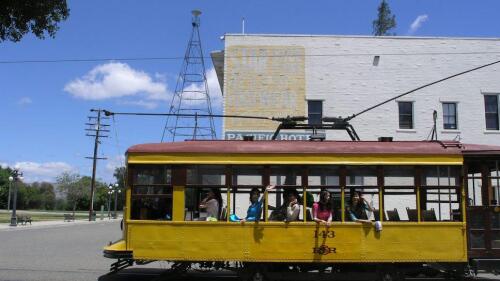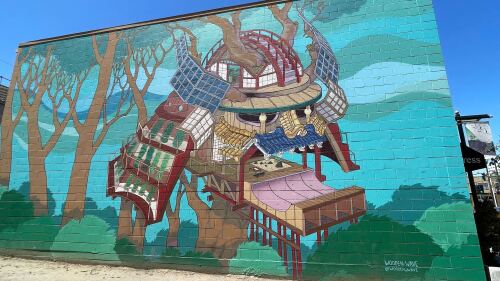We recently let you in on a little history about Heinlenville, a Chinatown in San Jose that dates back to 1887 — but did you know that there have actually been five total Chinatowns in our city’s history?
Today, we’re taking you into the legacy of Chinese settlements in San Jose — the history, their challenges with being accepted, and the cultural significance today.
🗺️ Early migration
In the 1850s, the Gold Rush drew thousands of people to California including Chinese immigrants. But after finding little success in gold mining, many of them sought work in orchards, farms, mining, and manufacturing in San Francisco, Sacramento, and Santa Clara Valley.
From the 1860s through the 1890s, the Chinese population in Santa Clara Valley grew rapidly as many provided cheap labor to the area’s fruit-growing industry. It was estimated that in 1880, 32.8 percent of the labor in the county was provided by Chinese immigrants.
🏮 Market Street Chinatown + Vine Street Chinatown
The first Chinese settlement in San Jose was Market Street Chinatown (1866-1870) — one of the largest Chinatowns in California at the time, totaling over 1,000 residents.
The thriving community was located at the corner of Market Street + San Fernando, and included about 20 apartment buildings, several restaurants, businesses, a temple, and a Chinese opera theater.
This community burned down just four years later in 1870 — because of the growing anti-Chinese movement in the US at the time, many believe it was due to arson. Following this, Vine Street Chinatown (1870-1872) was rebuilt a few blocks away but also burned down a few years later in 1872, allegedly by arson.
🏮 Plaza Chinatown
The Second Market Street Chinatown, also known as Plaza Chinatown (1872-1887), sprouted following the fire and was home to more than 1,400 people by 1876.
It thrived for ten more years, but in 1886, an Anti-Chinese Convention was held in San Jose with former Mayor Charles Breyfogle and City Council voting to get rid of Plaza Chinatown. However, before any moves could be made — this Chinatown became the third to succumb to a fire.
This was the location that, 100 years later, became the spot for the Fairmont Hotel — now known as the Signia by Hilton.
🏮 Woolen Mills Chinatown + Heinlenville
Woolen Mills Chinatown (1887-1902) — on Taylor Street along the Guadalupe River — was quickly built as a refuge, but as the cannery declined, so did the community and a fire destroyed it in 1902.
The last known Chinatown, Heinlenville (1887-1931), was created by a German immigrant named John Heinlen. He faced similar discrimination and sympathized with the Chinese, then building a community that later grew to 2,000 residents. Heinlenville remained the epicenter of San Jose’s Chinese American life until the Great Depression put John into bankruptcy.
By 1931, the city removed Heinlenville, leaving an empty dirt lot in what is now Japantown.
🧱 The rediscovery
In the mid-1980s, construction began for the Fairmont Hotel + Silicon Valley Financial Center. While digging the foundation, old artifacts from the Market Street Chinatown were excavated, sent to a warehouse, and forgotten.
In 2002, the Market Street Chinatown Archaeology Project rediscovered these 18,000 artifacts, which then inspired more research to be done about these lost towns.
Last fall, Mayor Sam Liccardo + city officials formally apologized for San Jose’s role in discrimination against the Chinese community and said that each generation “must reemphasize our commitment to justice.”
🔎 Delve deeper
The history of San Jose’s Chinatowns constantly returns to the surface — and here are some resources to learn even more.
- Chinese American History Museum — located in History Park, you can see the reconstruction of the 1888 Ng Shing Gung Temple.
- Market Street Chinatown Archaeology Project — read monthly updates about current + ongoing research.
- “Home Base: A Chinatown called Heinlenville” — a documentary that goes in depth with Heinlenville’s history, and is available to view at the Chinese American History Museum.














